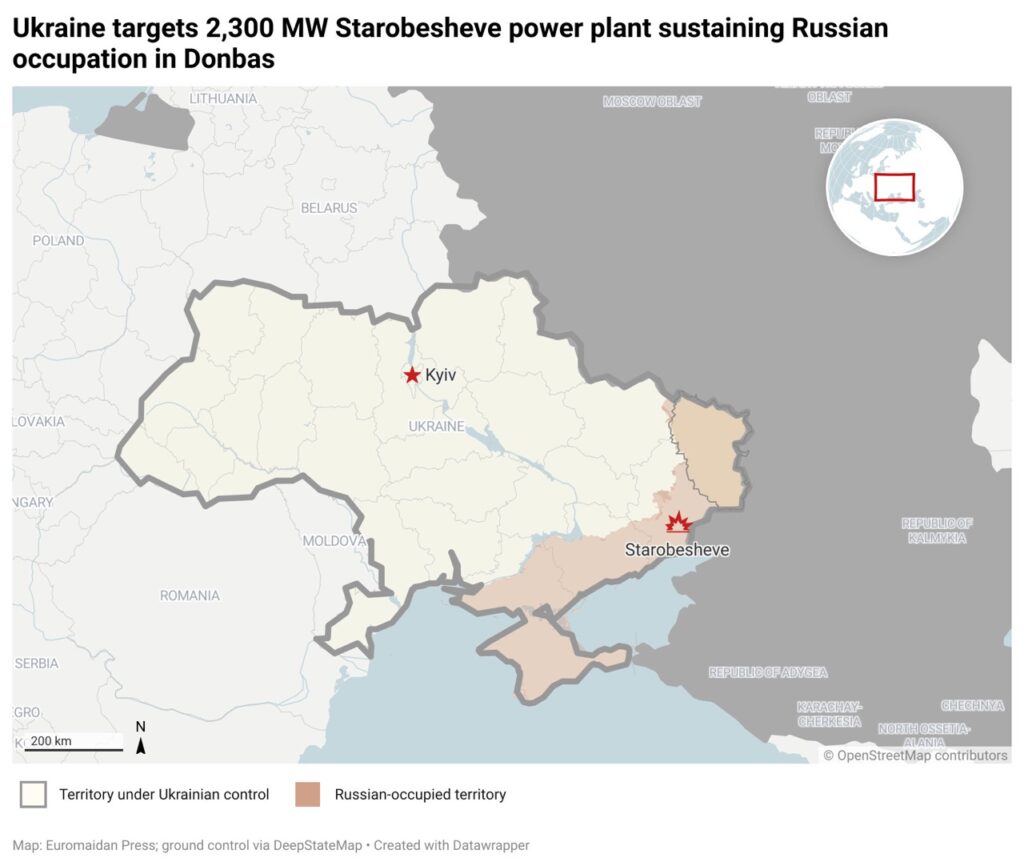Night drone strikes disable two power stations in occupied Donetsk Oblast, plunge cities into darkness

Overnight on 18 November, drones struck the Zuivska thermal power station in occupied Zuhres in Donetsk Oblast, triggering a fire at the facility.
In videos released by Telegram channel Exilenova+, the sound of UAVs can be heard, along with Russian air defense systems operating and a powerful explosion. Fire subsequently broke out on the facility's grounds. Later reports suggested the strike drones likely hit the transformer of the second boiler, which was knocked out of service.
Local social media accounts reported that power outages began in occupied Donetsk and Makiivka following the explosions, while Ilovaisk lost electricity completely.
The occupation administration later confirmed the strike, claiming that in addition to Zuivska, the Starobeshivska thermal power station was also allegedly attacked overnight.
"As a result of an attack on the Republic's energy system, the Zuivska and Starobeshivska thermal power stations were damaged. Many settlements were left without power, which caused heating plants and filtration stations to shut down," wrote Denis Pushilin, the so-called "governor" of the so-called "DNR."
Pushilin added that "relevant departments" are working in emergency mode.
The Zuivska thermal power station is located 40 km east of Donetsk. It has been under Russian control since 2014 and supplies electricity to temporarily occupied territory. Its capacity is approximately 1.2-1.3 GW (four power units of roughly 300 MW each).
In the early hours of 18 November, several social media accounts reported unidentified drones over occupied Donetsk Oblast. Within half an hour, reports emerged that power was flickering in Makiivka and some districts of Donetsk, while Ilovaisk lost power entirely.
Shortly after, videos appeared online showing that unidentified drones were attacking the Zuivska thermal power station. The published footage showed fire breaking out near the facility.
Around 4 am, local Telegram channels reported that power had gone out across all of Donetsk and parts of Makiivka. This occurred after reports of an attack on the Starobeshivska thermal power station, though what struck the facility remains unknown.
